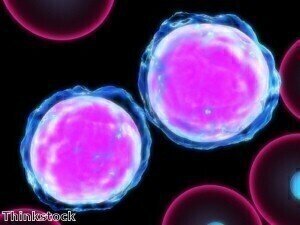Microscopy & Microtechniques
Diamond Light Source Places cryo-EM Workflow Order with FE
Jun 30 2014
FEI has announced its largest order for Life Sciences –two Titan Krios™ cryo transmission electron microscopes (TEMs), a Scios™ DualBeam™ FIB/SEM (focused ion beam/scanning electron microscope) and a Talos™ cryo-TEM - which has been secured by the UK’s Diamond Light Source, one of the most advanced synchrotron light sources in the world. These microscopes will form the core of Diamond’s electron biology facility (EBIC) and will be used in conjunction with other structural biology techniques to enable new insights into viruses and cellular proteins.
Professor David Stuart, director for Life Sciences at Diamond Light Source, states, “X-ray diffraction (XRD) and nuclear magnetic resonance (NMR) are extremely powerful techniques that can resolve atomic-scale structure, but can only be applied to a subset of biological molecules and complexes. Cryo-EM can resolve structures down to the sub-nanometer, molecular-scale, and can look at just about anything, including large multimolecular complexes. In the simplest sense, integrative structural biology uses cryo-EM to provide the overview, and XRD and NMR to see the details. Locating cryo-EM equipment at the synchrotron gives researchers access to a range of advanced capabilities at the same facility.” The new Cryo EM centre for biology is being funded by a £15.6 million grant from the Wellcome Trust, the Medical Research Council (MRC) and the Biotechnology and Biological Sciences Research Council (BBSRC).”
“When the new Cryo-EM centre opens in 2015, the UK’s national synchrotron will house the essential tools needed to carry out a comprehensive and integrated structural biology approach for characterisation of viruses and protein complexes,” states Dr. Paul Scagnetti, vice president of FEI’s Science Business Group. “Answers to many of the most important biological questions, from basic biological functions to complicated disease processes, can potentially be discovered by understanding the structure and function of the molecular machines that operate in this spatial regime.”
Scagnetti adds, “Diamond Light Source combines an advanced synchrotron with broad and deep technical expertise. Professor David Stuart, who played a leading role in the cryo EM acquisition, is one of the best-known experts in the field of XRD and structural biology. We are delighted to be working with him and to see the fast growing acceptance of cryo-EM into the discipline of integrative structural biology.”
Diamond Light Source, located on the Harwell Science and Innovation Campus near Oxford, is a third-generation synchrotron light source, which generates high-intensity beams at frequencies ranging from microwaves to hard X-rays, providing opportunities for scientific research in a number of disciplines.
Digital Edition
Lab Asia 31.2 April 2024
April 2024
In This Edition Chromatography Articles - Approaches to troubleshooting an SPE method for the analysis of oligonucleotides (pt i) - High-precision liquid flow processes demand full fluidic c...
View all digital editions
Events
Apr 28 2024 Montreal, Quebec, Canada
May 05 2024 Seville, Spain
InformEx Zone at CPhl North America
May 07 2024 Pennsylvania, PA, USA
May 14 2024 Oklahoma City, OK, USA
May 15 2024 Birmingham, UK


















